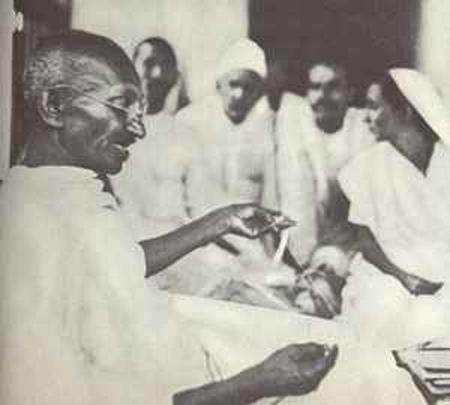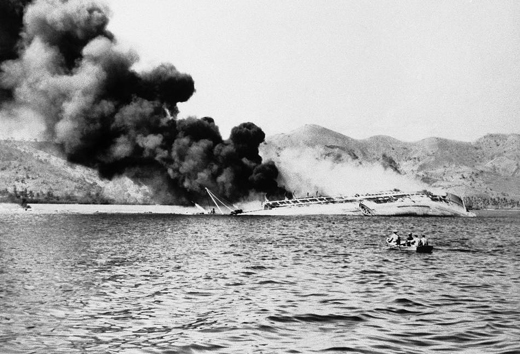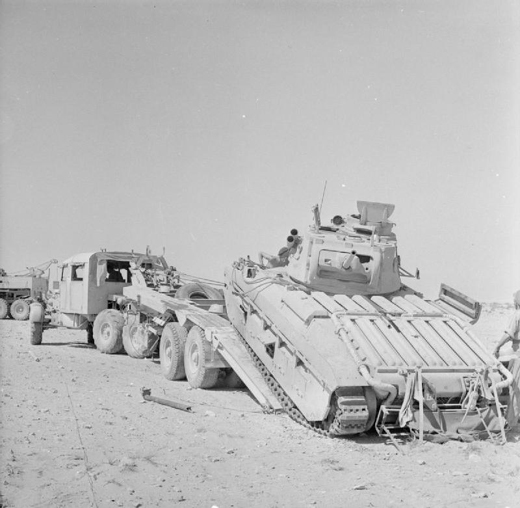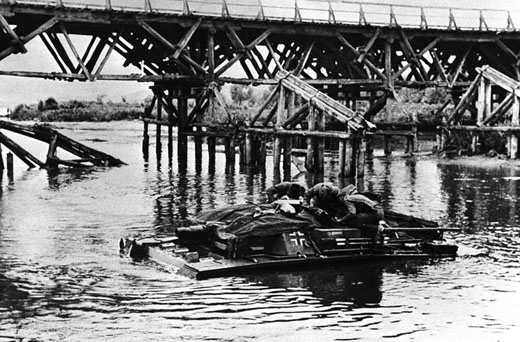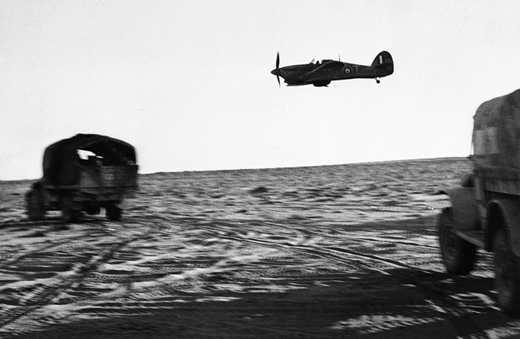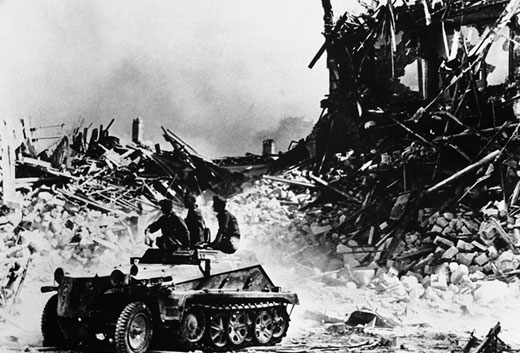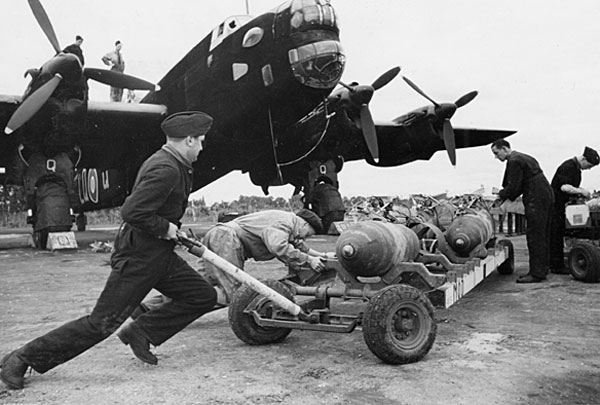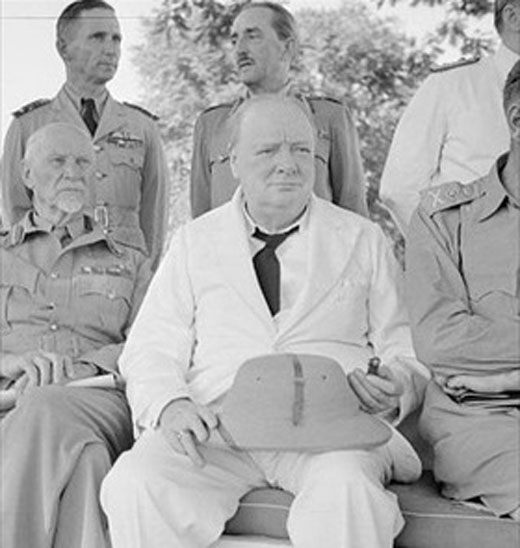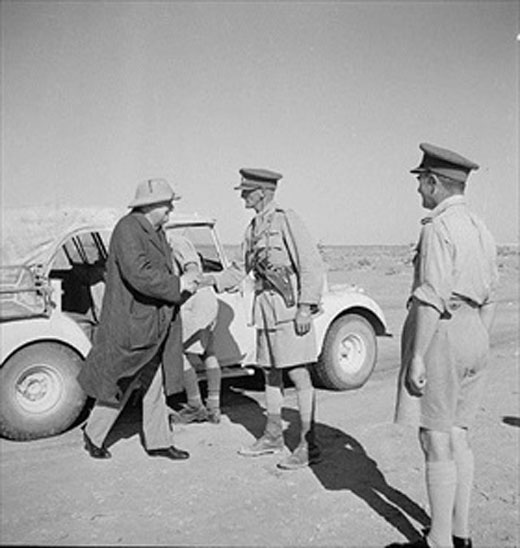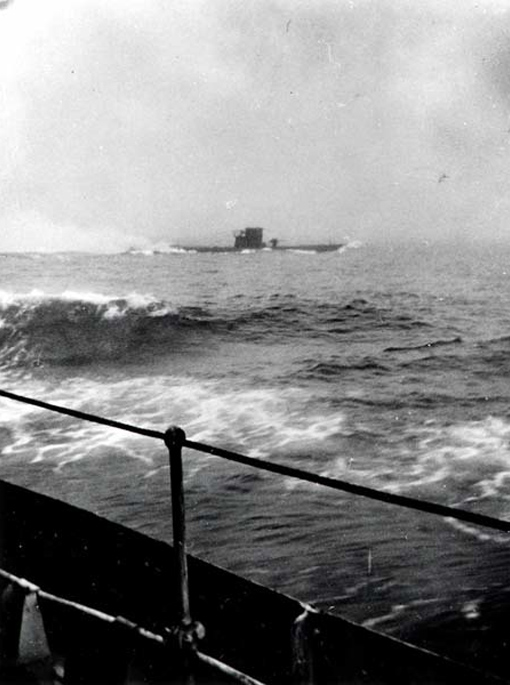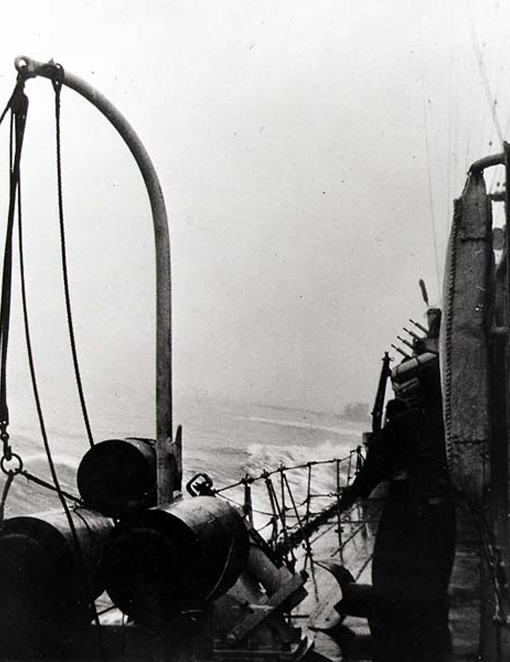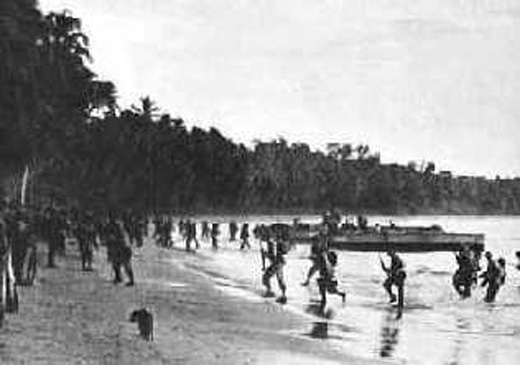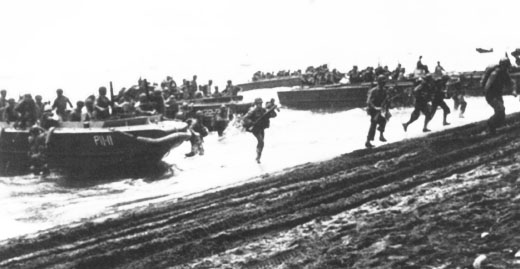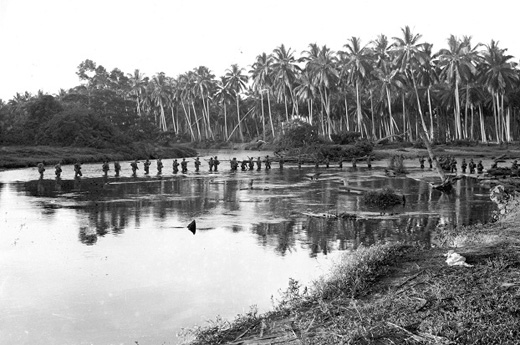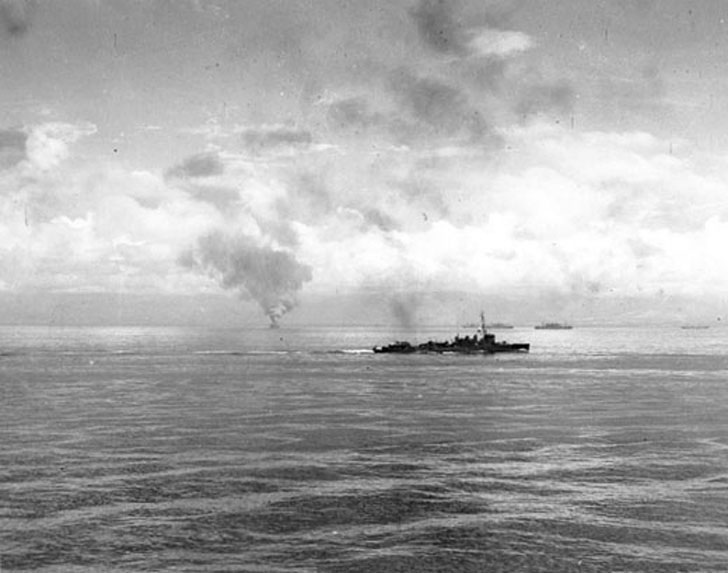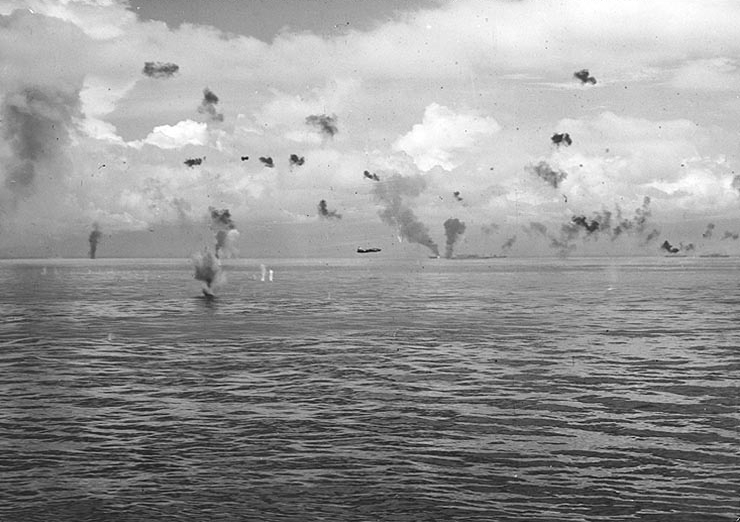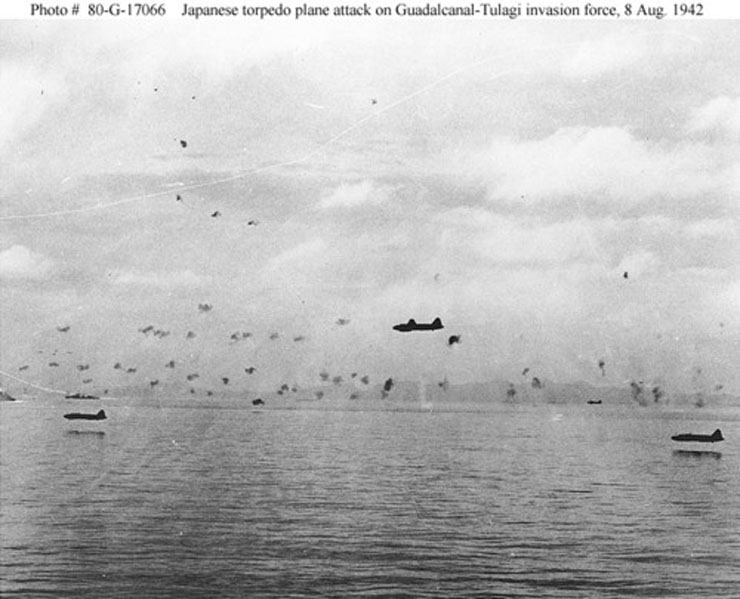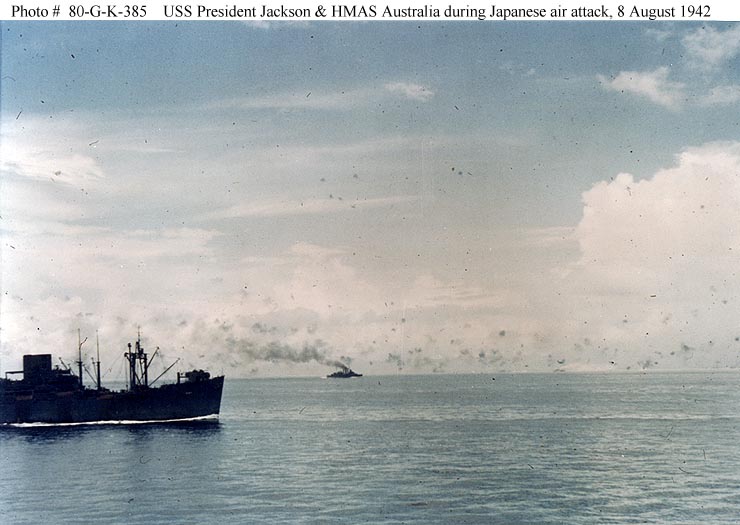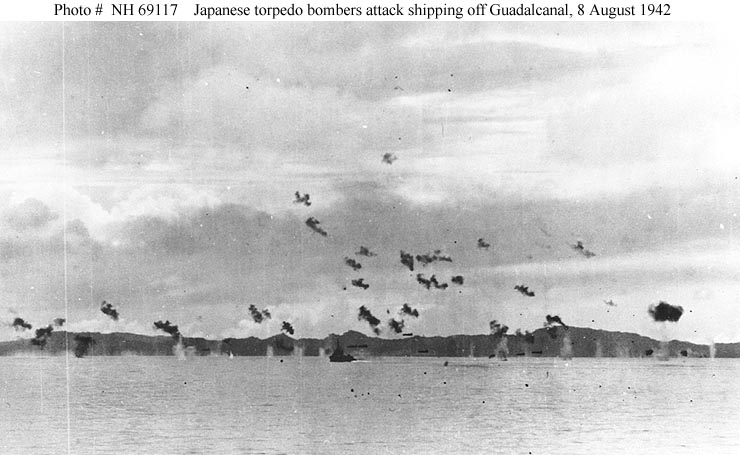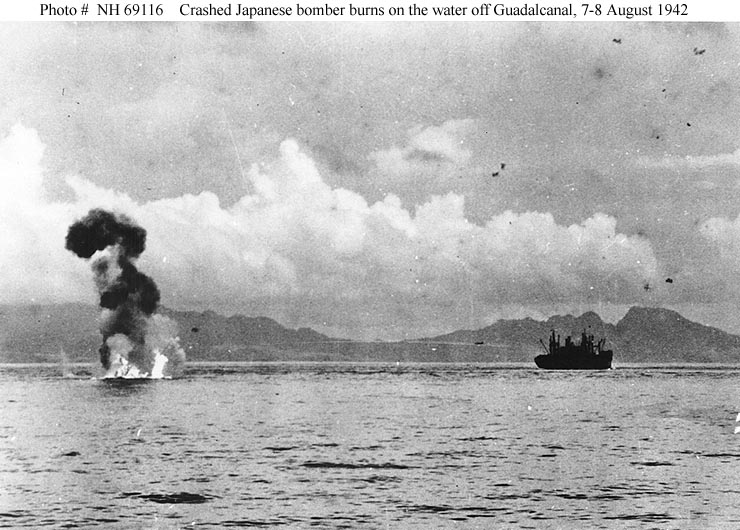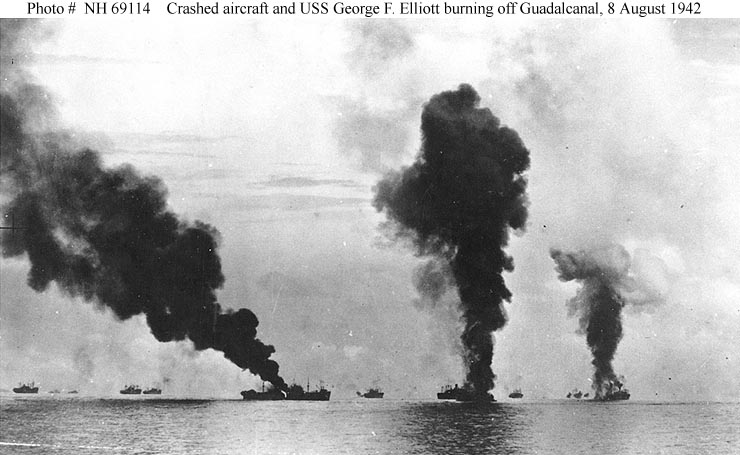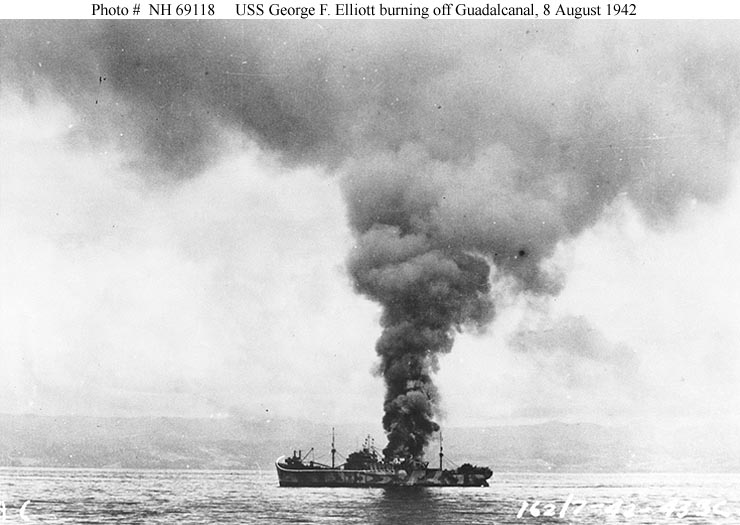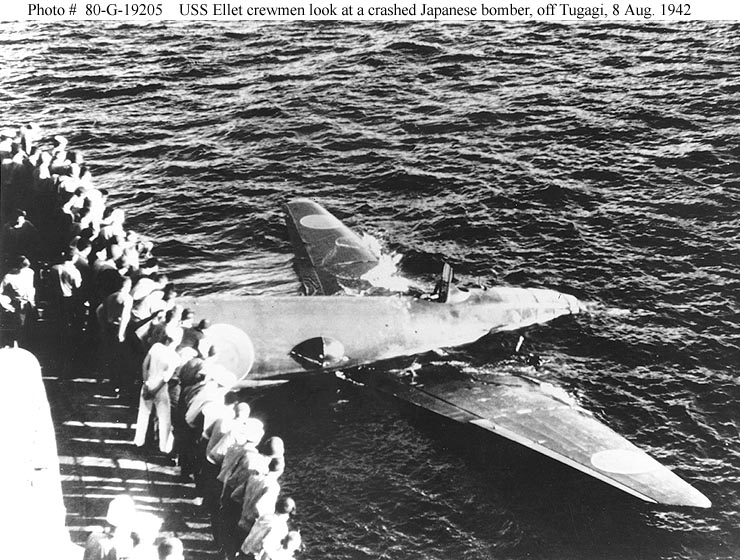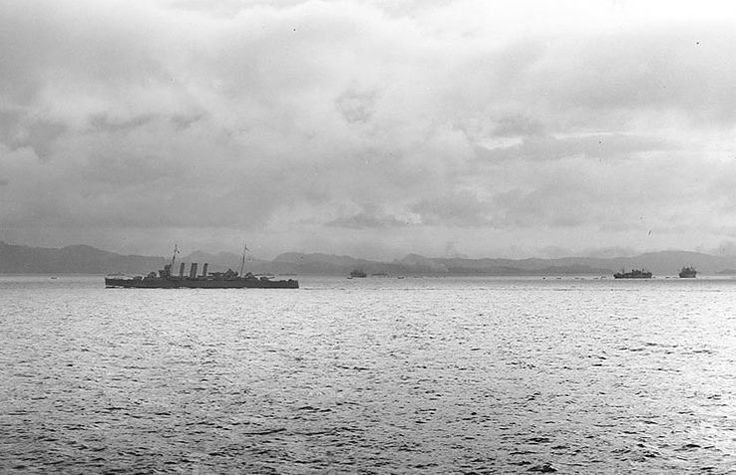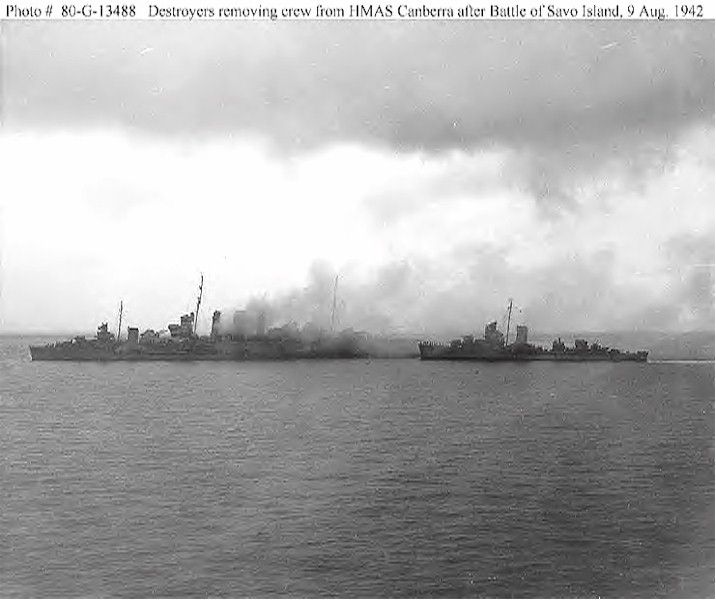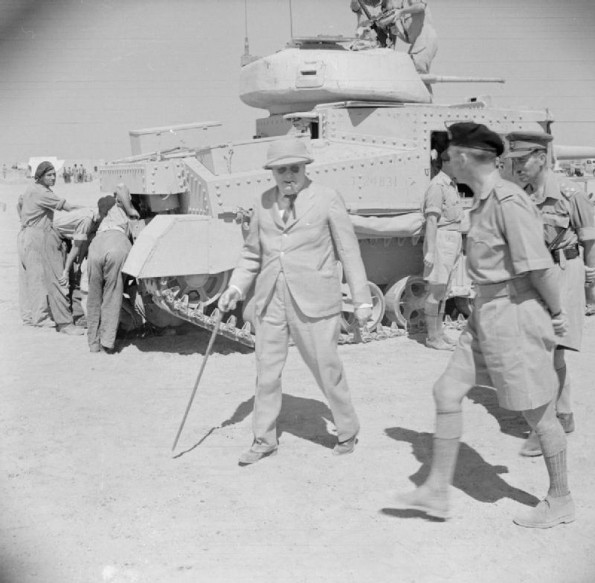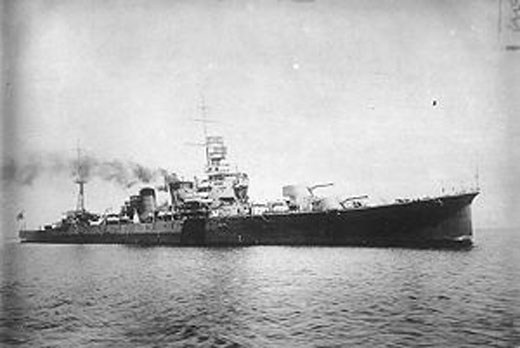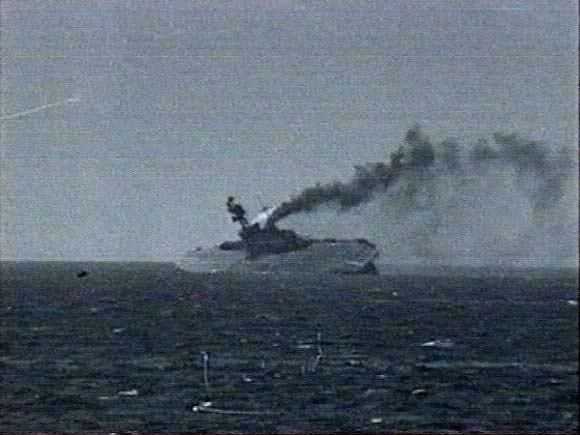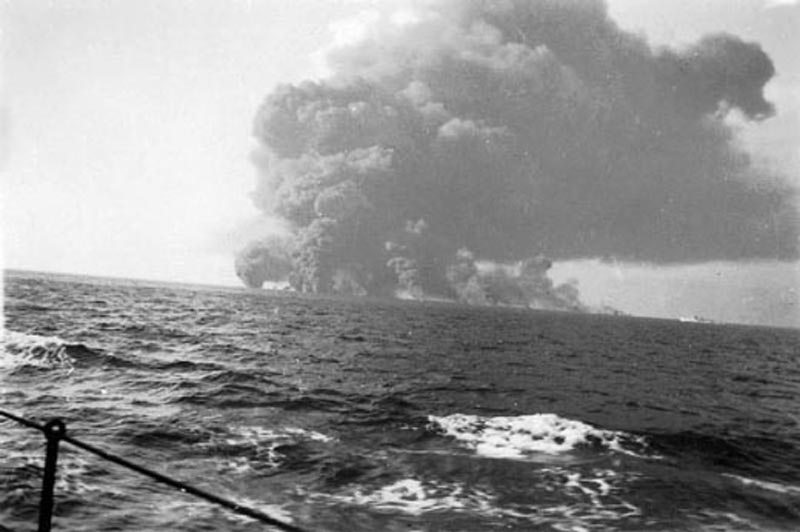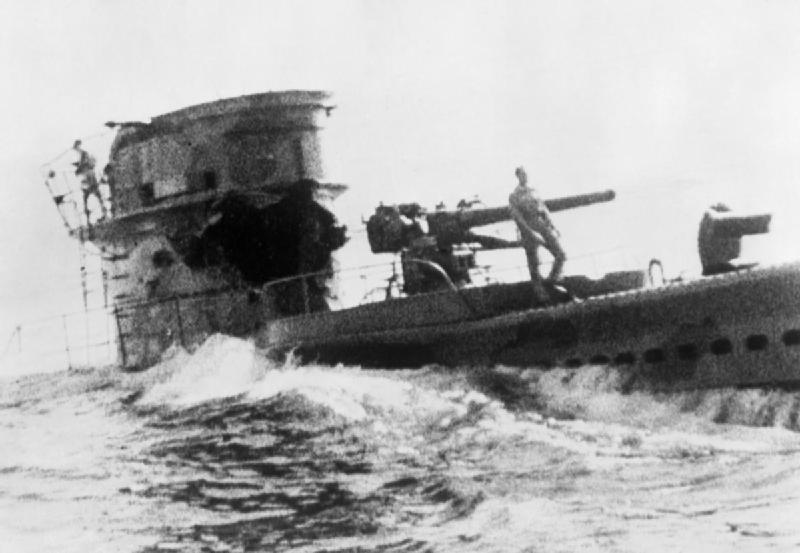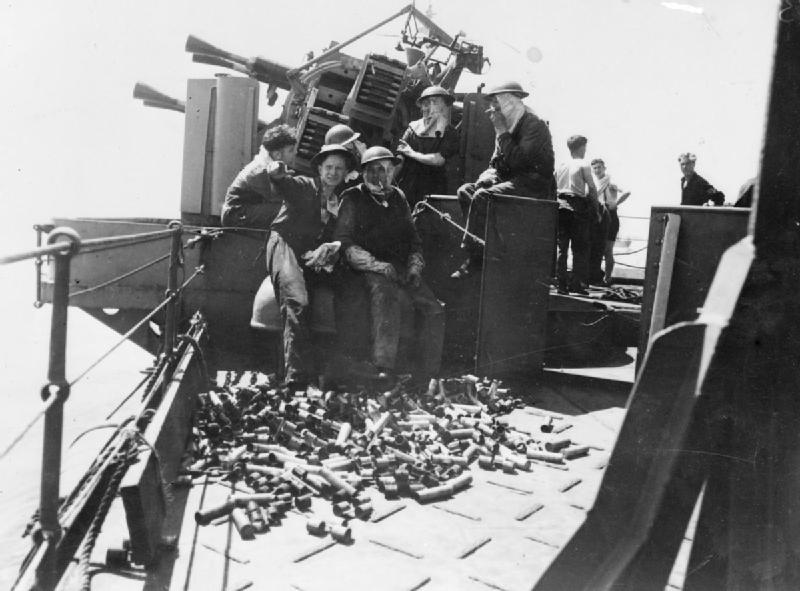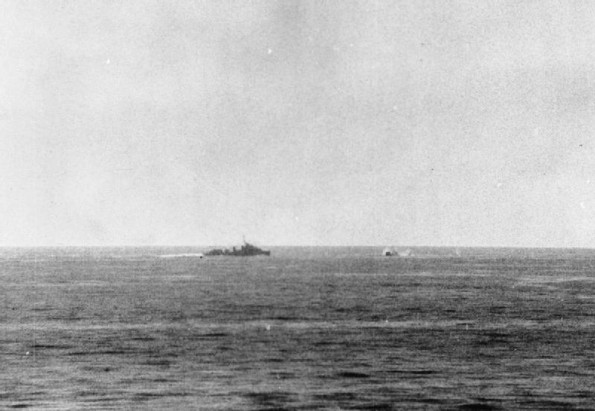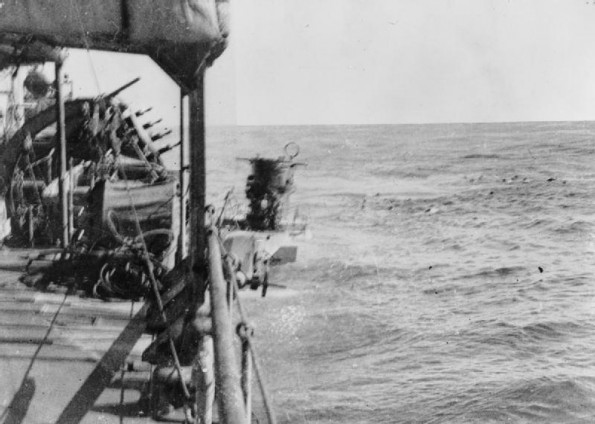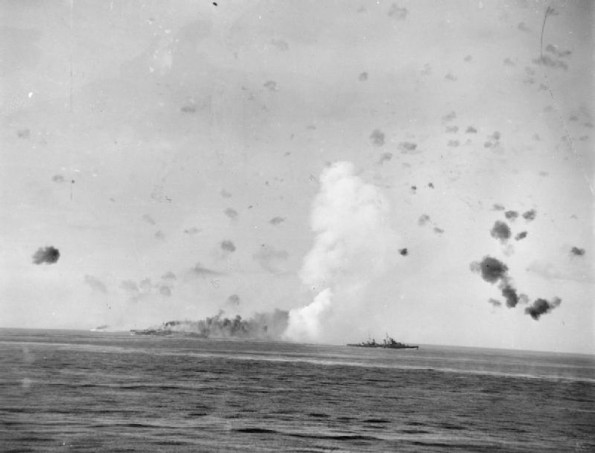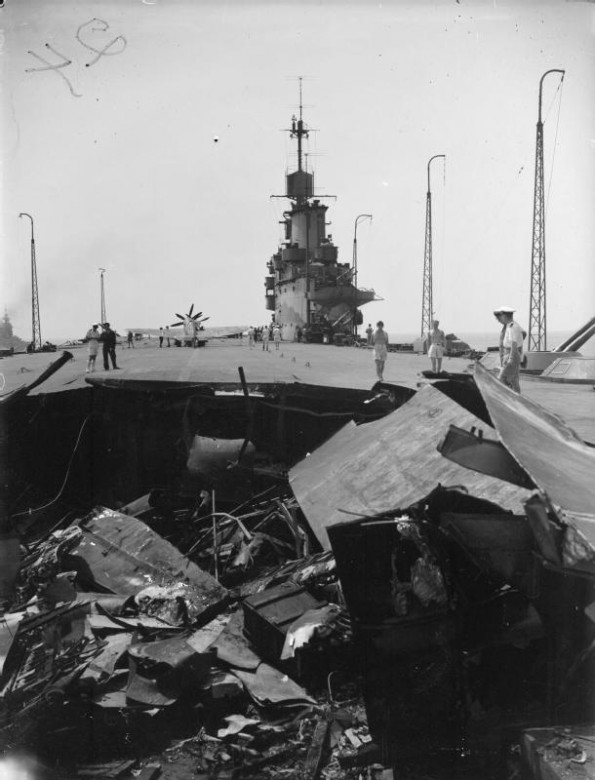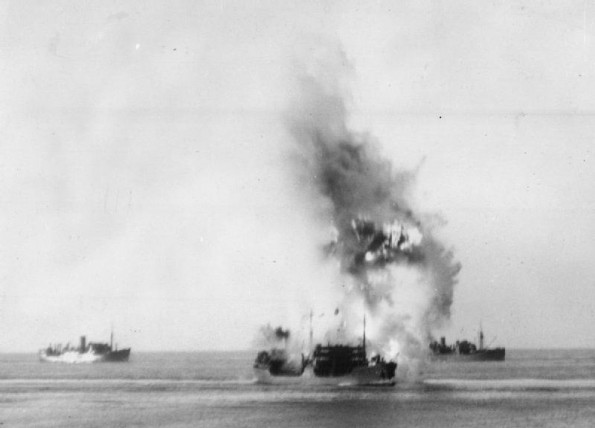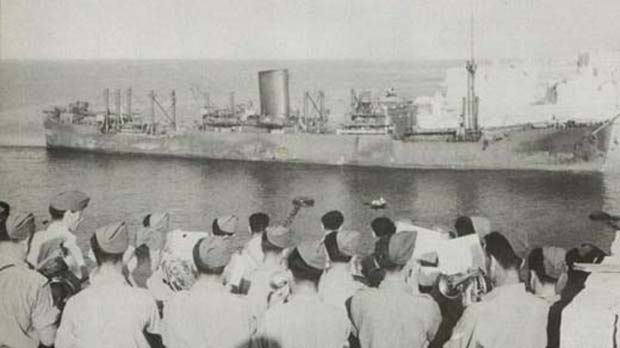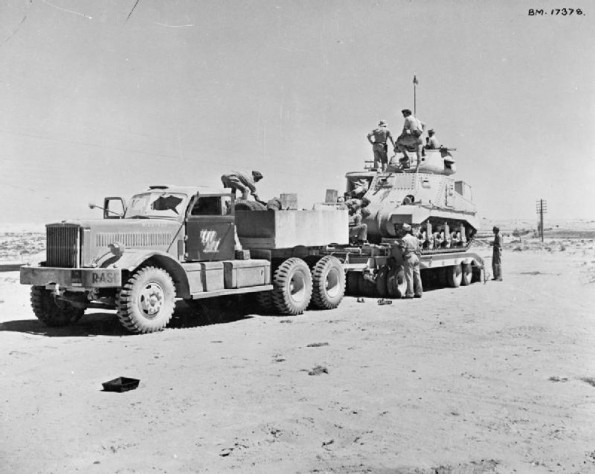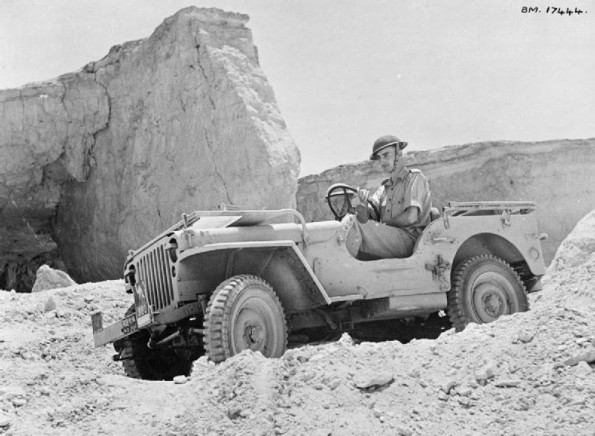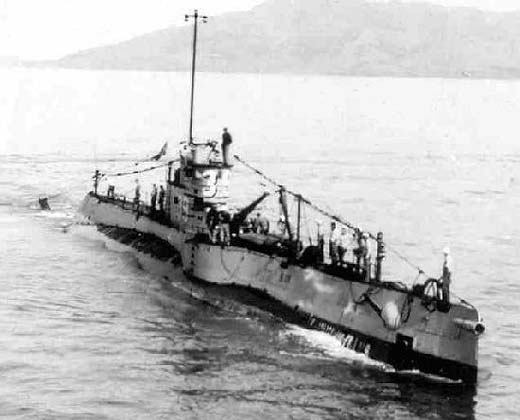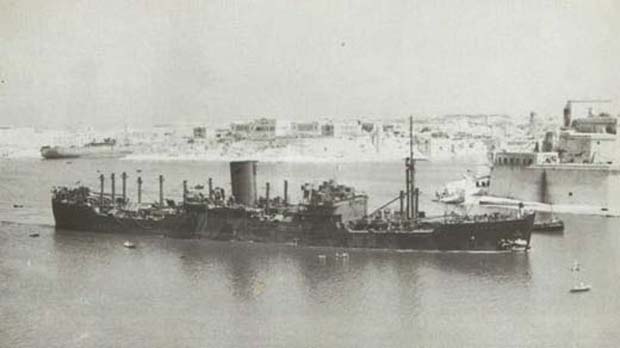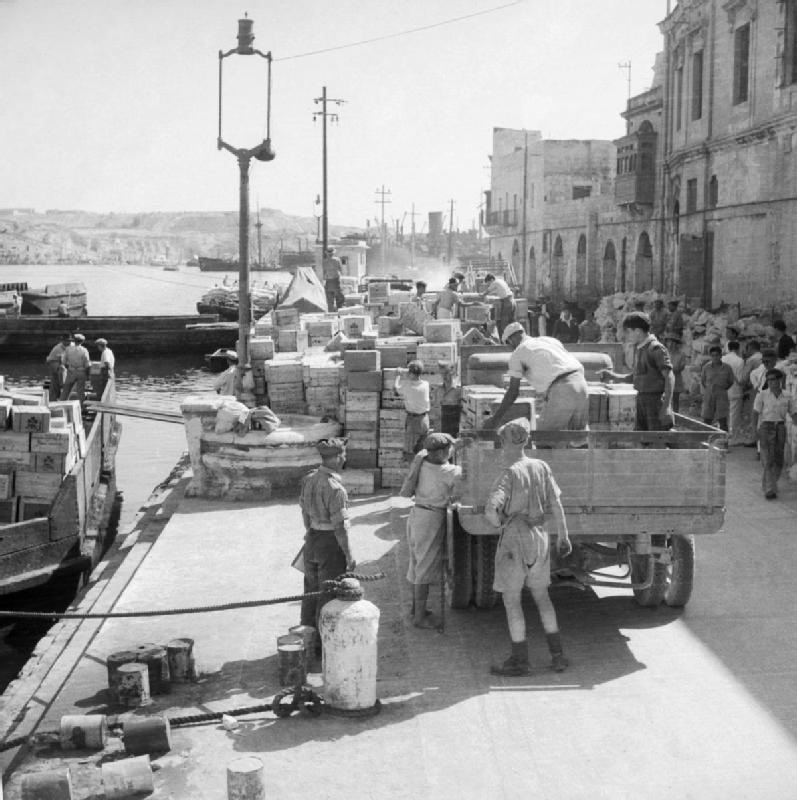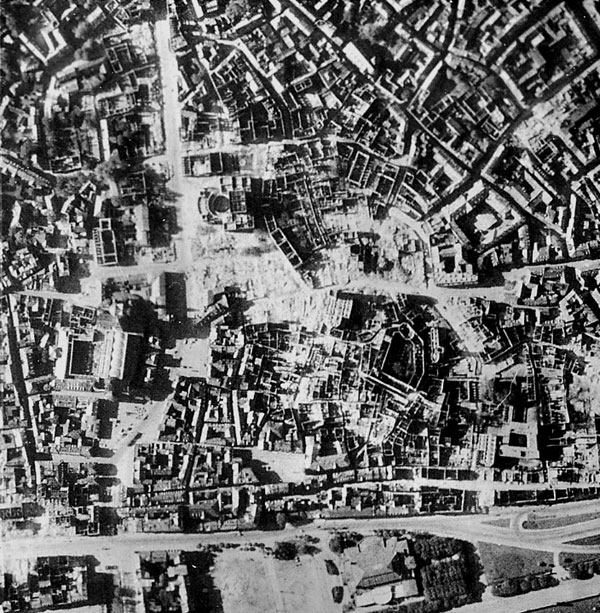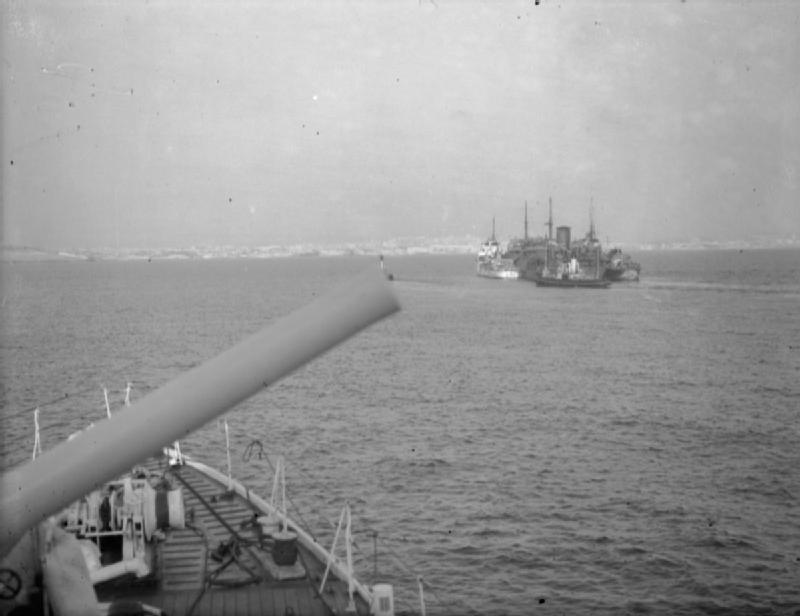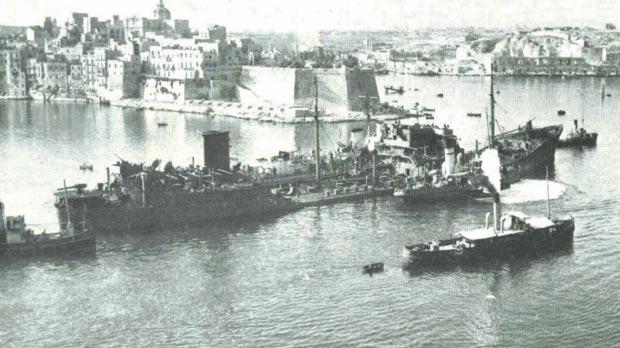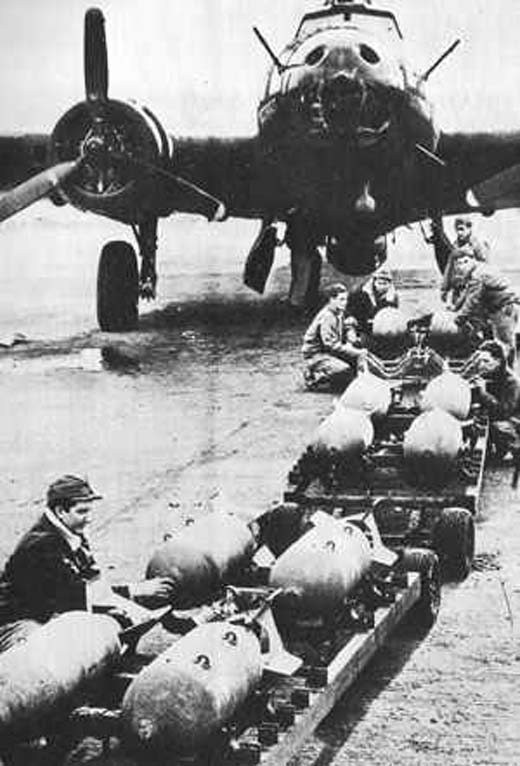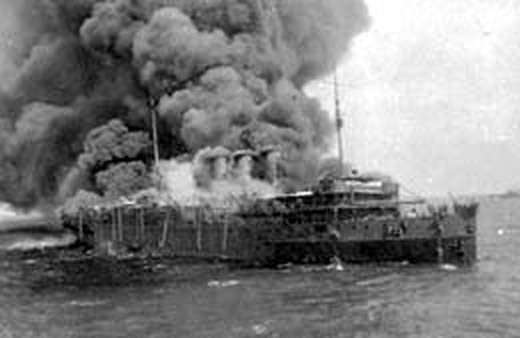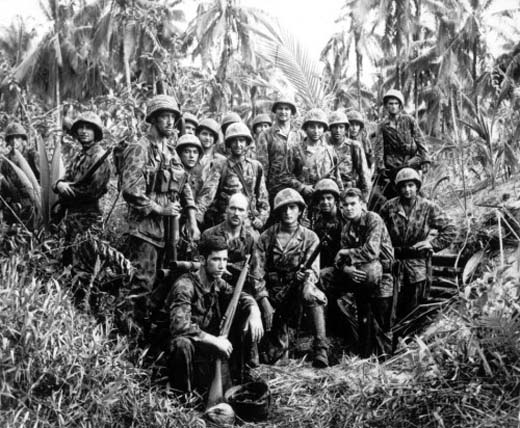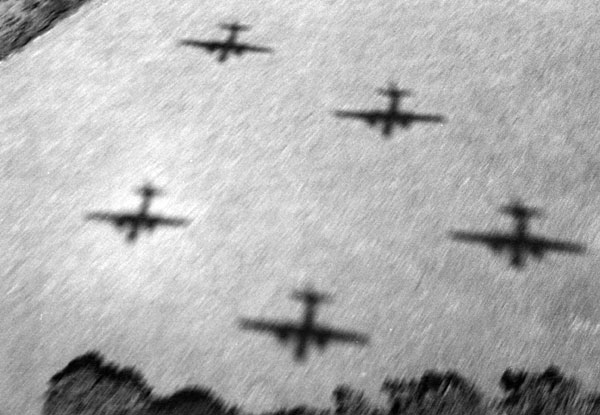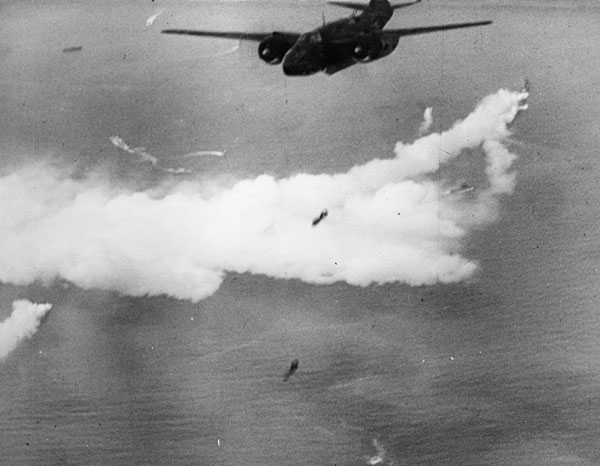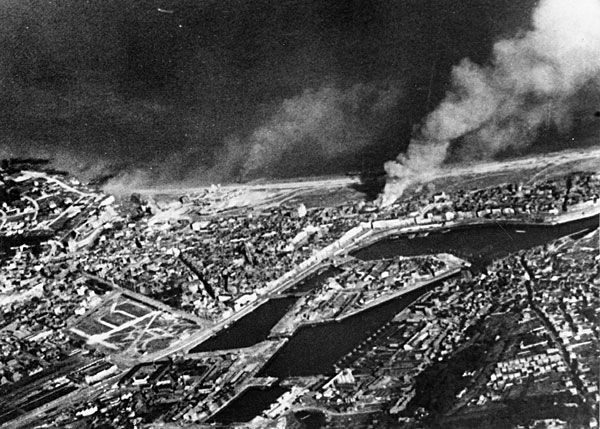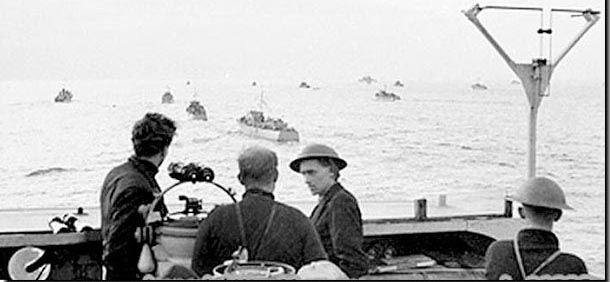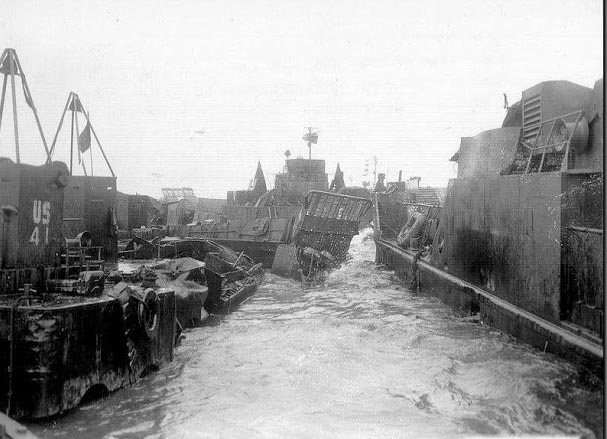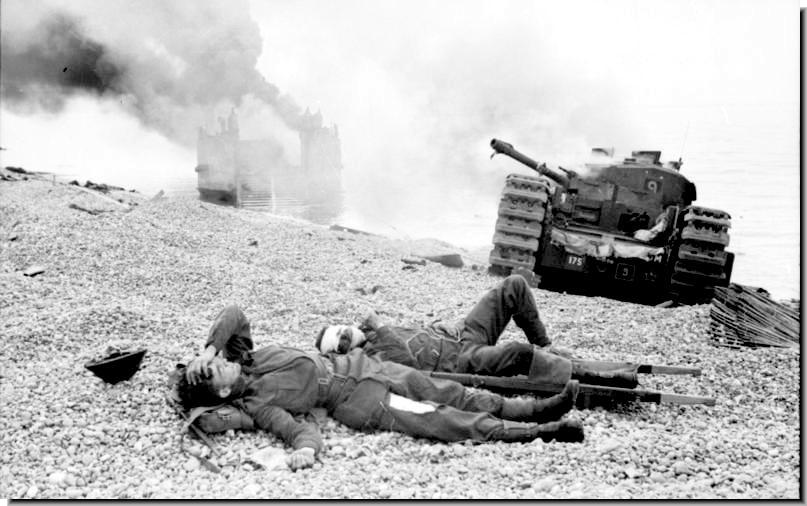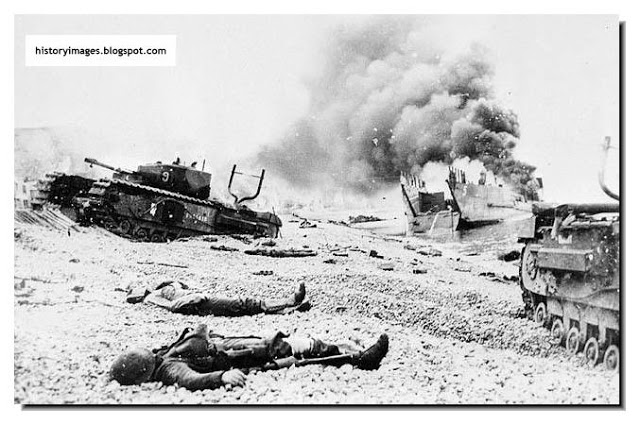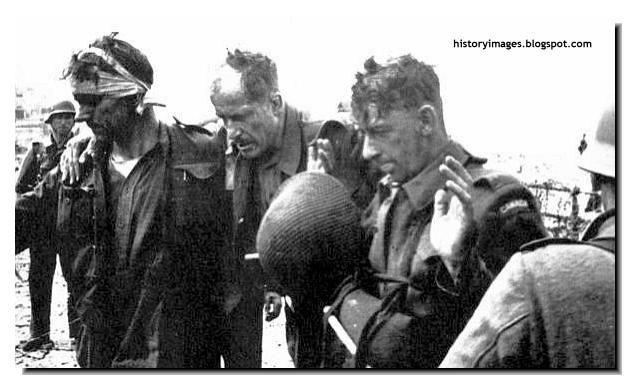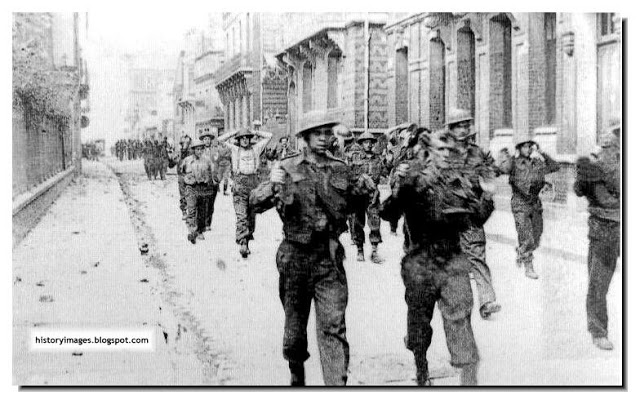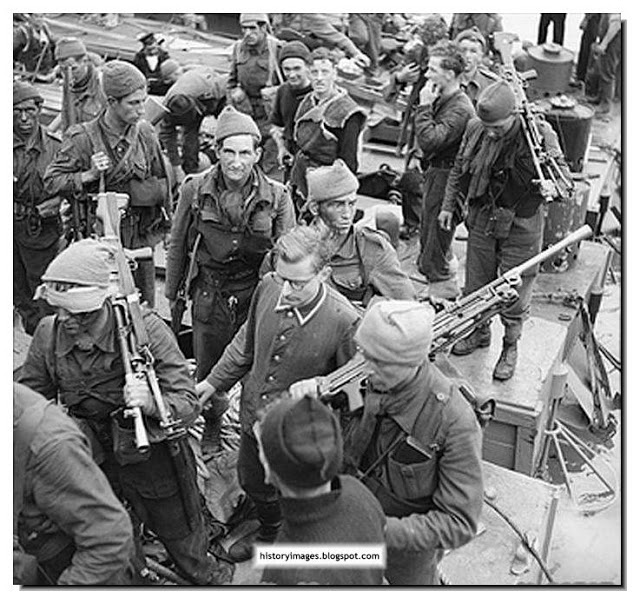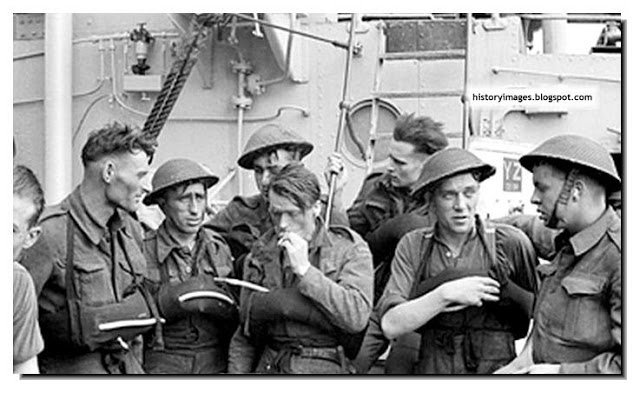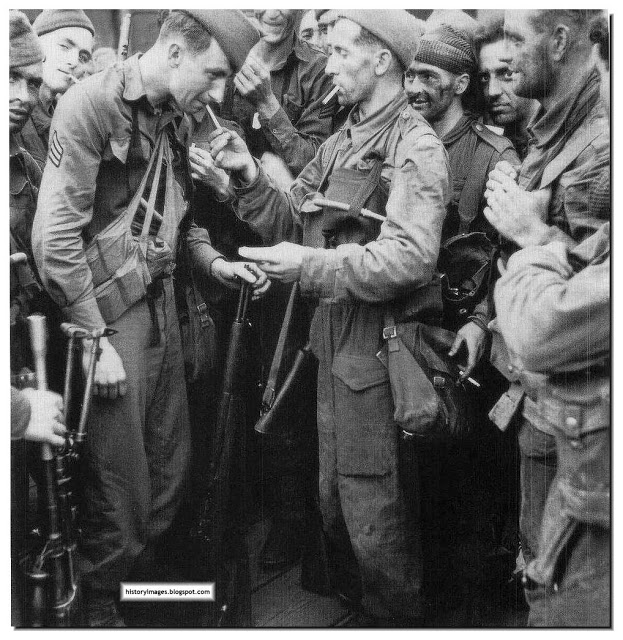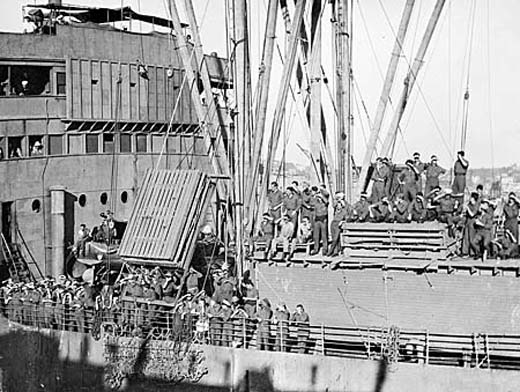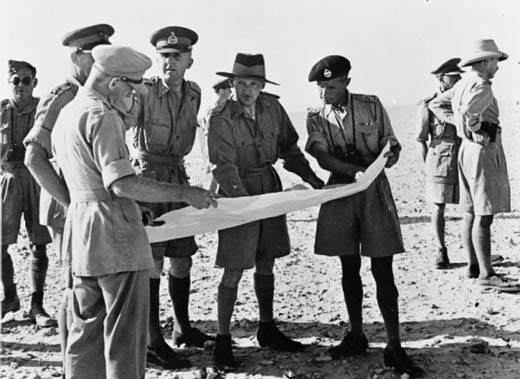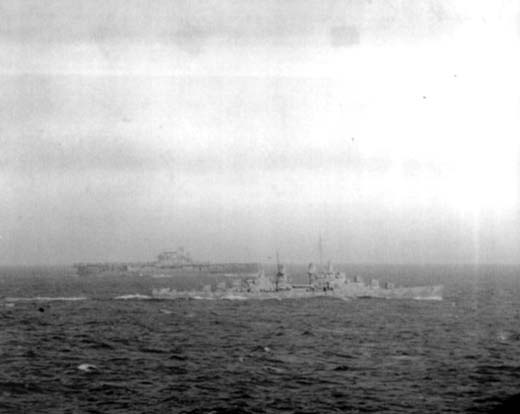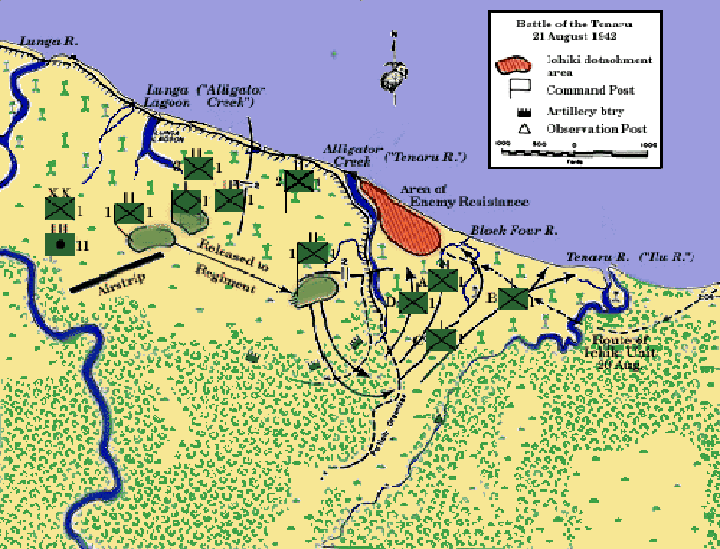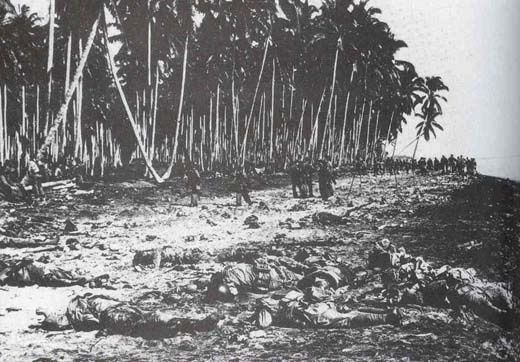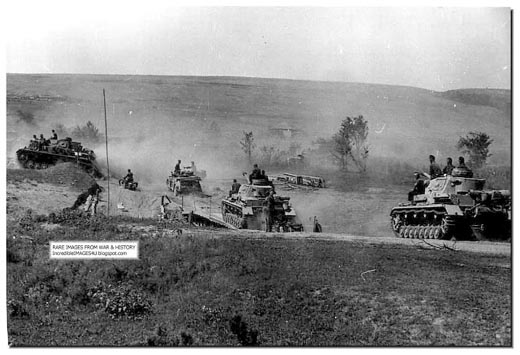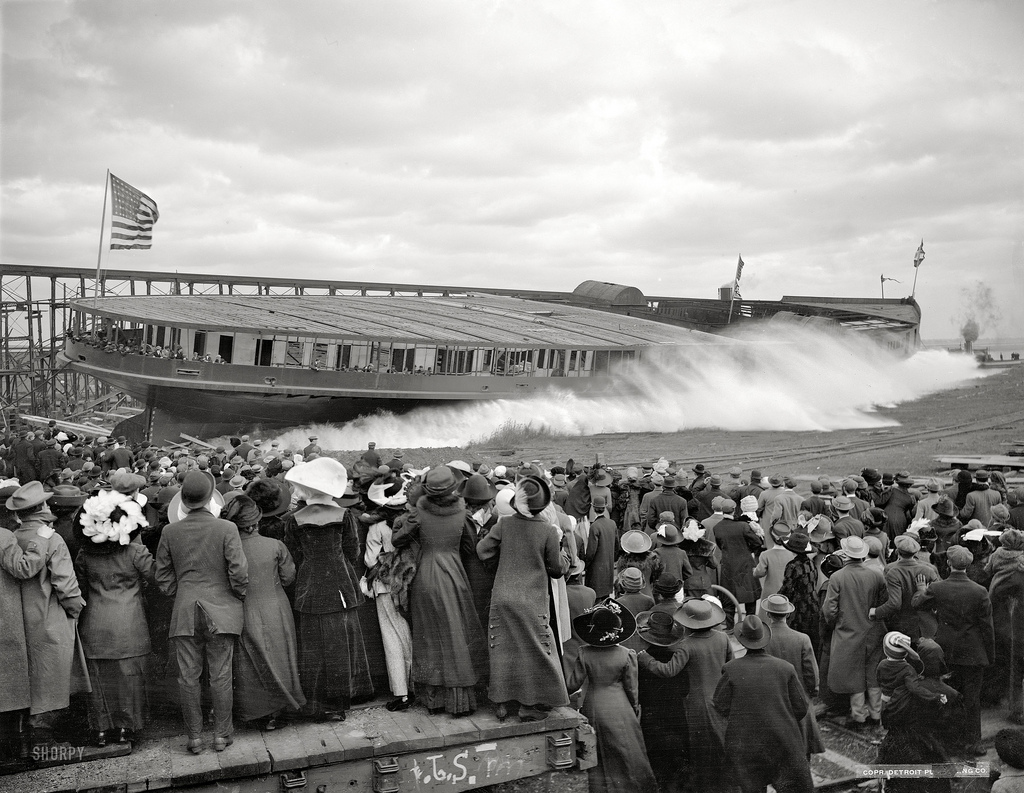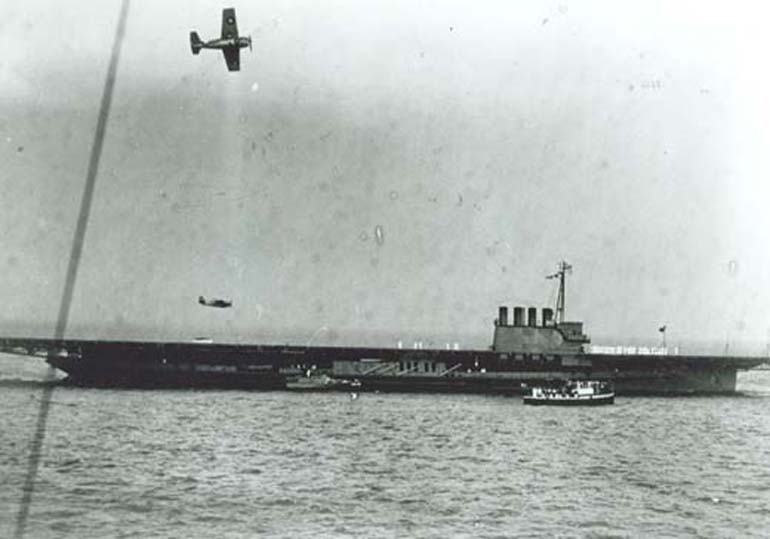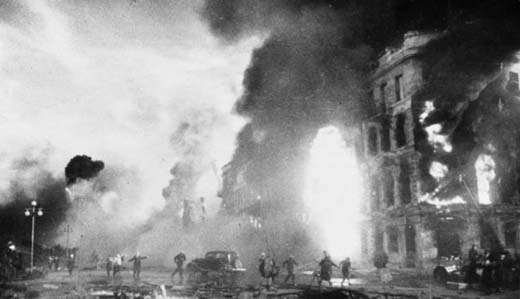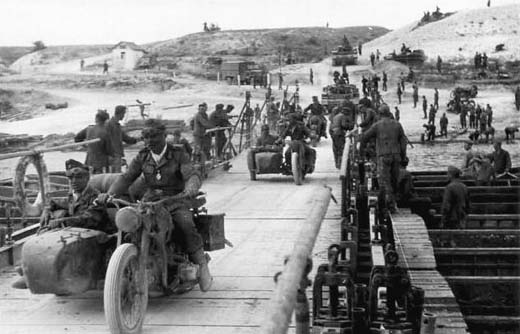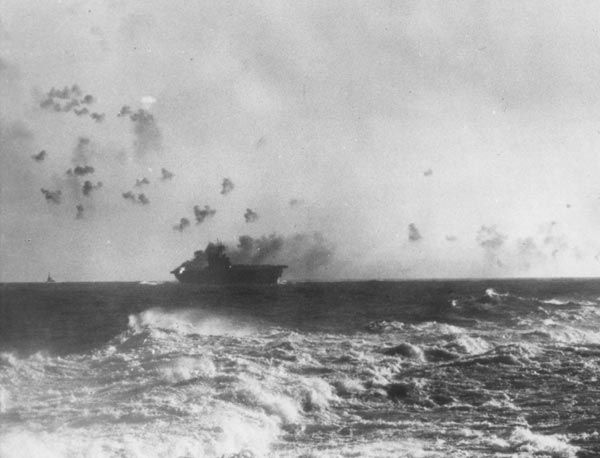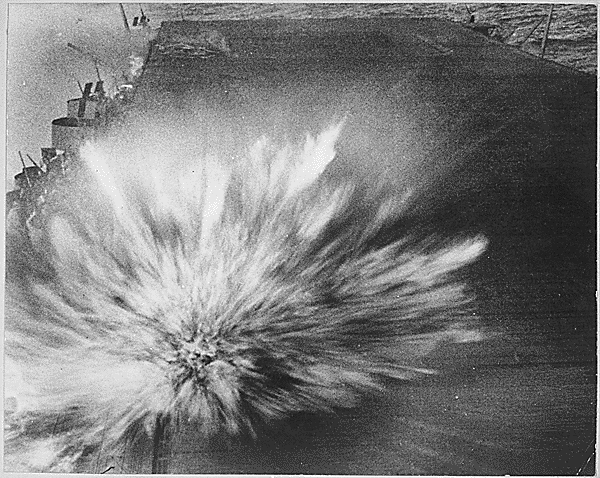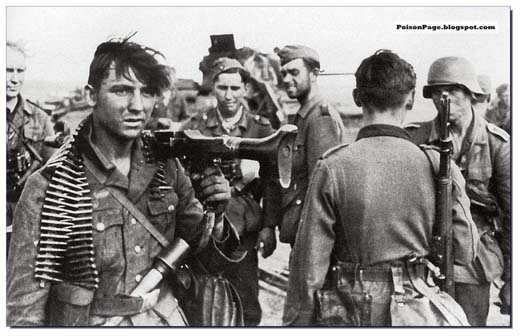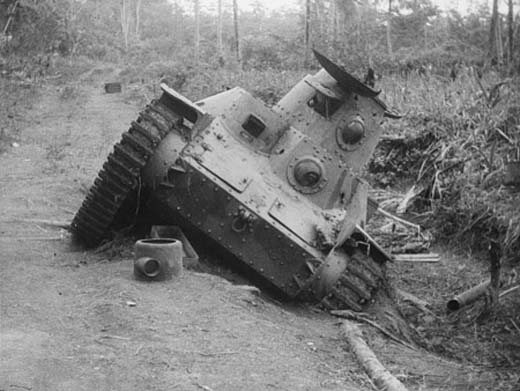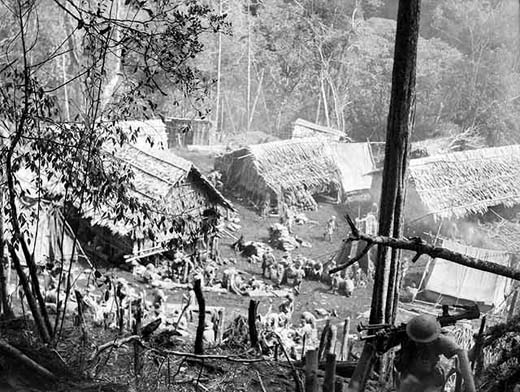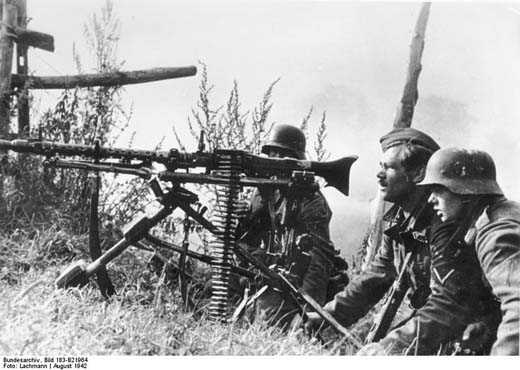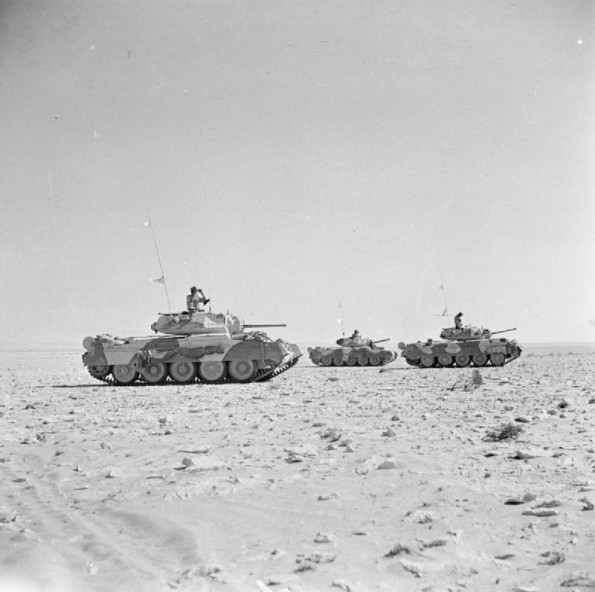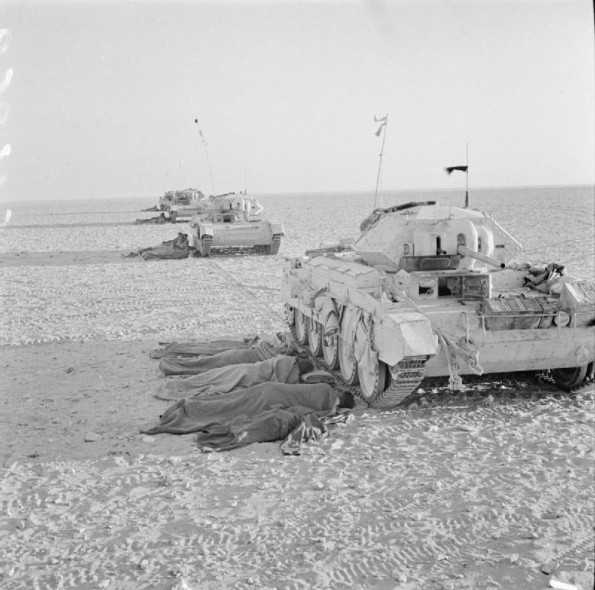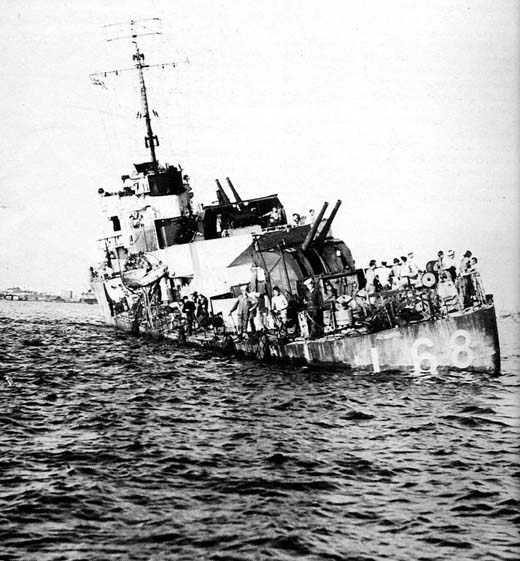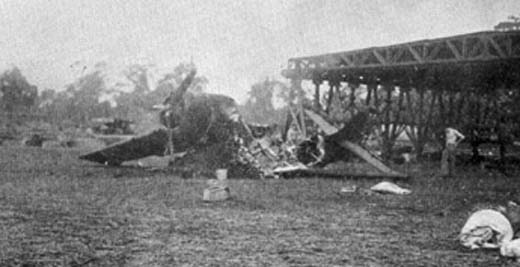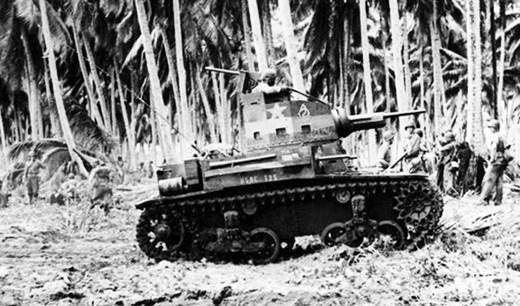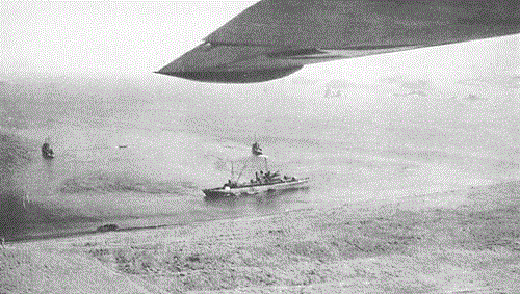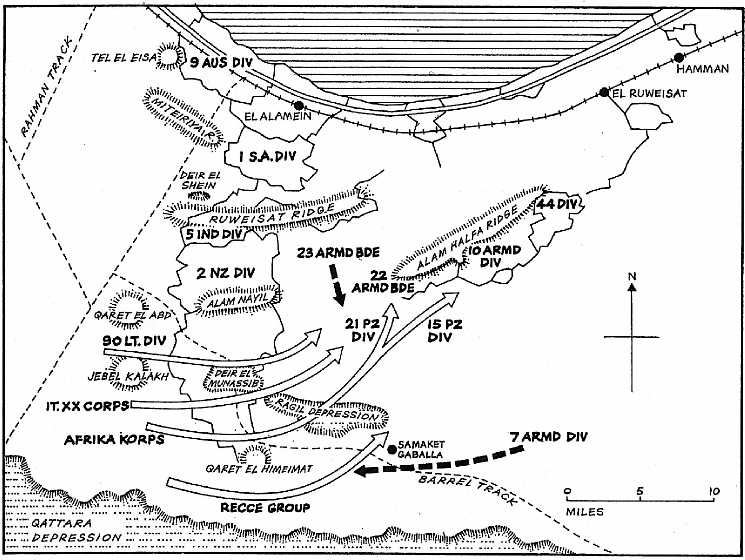Air Operations, Europe
BOMBER COMMANDDaylight Ops:
- 6 Bostons to Flushing docks
- 2 aircraft lost
- 5 Mosquitos to different German targets
- 1 plane lost
A Douglas Boston Bombing Flushing, Holland |
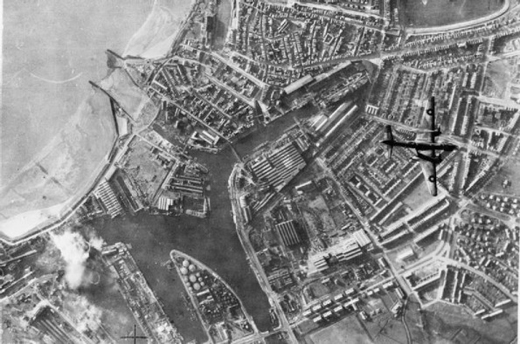 |
Air Operations, Mediterranean
USAMEAF B-24s attack an Axis convoy at sea claim mortal hits on a large merchant ship. 1 B-24 is written off after crash-landing at its base.
[Air Operations, New Guinea
5th Air Force B-17s attack Gona and Japanese shipping in Huon Gulf. 35th Fighter Group P-400s down an A6M Zero and a twin-engined reconnaissance plane over Buna during the morning.
[Air Operations, North Africa
Cairo is bombed by Axis planes.
[Air Operations, Solomons
11th Heavy Bomb Group B-17s based at Efate/Vila Field attack the Japanese Navy seaplane base at Gavutu Island downing 2 A6M2-N 'Rufe' float fighters in the process.
[CBI
Generalissimo Chiang Kai-shek approves Gen Stilwell's recommendation for an offensive againsg Burma, and modifies his previous support requirements from June 29. The offensive will require about 20 Chinese divisions, 2 in India and 15 in Yunnan province. The divisions in India will be trained and led by Stilwell at the US base in Ramgarh. Chiang, still unhappy that US advisers and Lend-Lease supplies are slow in arriving, seeks greater concessions from the Americans. He demands a US infantry division, 500 aircraft for the Chinese air force, and an additional 5,000 tons of supplies airlifted over the Hump. Chiang is reluctant to provide Chinese forces in Burma. An Allied victory in Burma would lead to the reestablishment of British colonial authorit in the region. He hedges his pledge for an offensive by making impossible demands and siding with Gen Chennault, whose 10th Air Force still needs 2,000 tons of supplies a month to keep flying. These demands will force Stilwell to split his resources and thereforw delay any offensive in the near future.
[China
Chiang Kai-shek accepts Gen Stilwell's proposal that he should assist in the re-capture of Burma, and modifies the requests he put forward on June 29.
[Eastern Front
The forces of Army Group A continue to advance fanning out south of Rostov, cutting the railway between Novorossiysk and Stalingrad and capturing the town of Salsk, a rail center. They reach the Kuban River near Kropotkin. There is more fierce fighting in the bend of the Don near Kalach and Kletskaya. In the central sector the Russians renew their attacks in the Rzhev area.
CENTRAL SECTOR
The Kalinin Front, using the 30th and 29th Armies, begin a series of attacks aimed at clearing the Germans from the north bank of the Volga around Rzhev and taking the town. The 31st and 20th Armies of the West Front are to punch their way through the south face of the salient, taking Pogoreloye, Gorodische and Karmanovo. The attack continues during August, placing great pressure upon the 9th Army but failing to make any territorial gain.
SOUTHERN SECTORIn the Don Elbow fierce battles rage as the 1st and 4th Tank Armies of the Stalingrad Front try to gain time for the shattered 62nd and 64th Armies to fall back across the Don. There is heavy fighting around Kalach where the 64th Army crosses to the east bank.
The 1st Panzer Army pushes deeper into the Caucasus, the 13th Panzer Division reaching the Kuban at Kropotkin and threatening the rear of the 44th Army in the Kuban peninsula.
[Gulf of Mexico
U-166 is sunk by Coast Guard aircraft about 45 miles south of the mouth of the Mississippi River.
| Class | Type IXC |
| CO | Oberleutnant zur Se3e Hans Kuhlmann |
| Location | Gulf of Mexico, Mississippi estuary |
| Cause | Air attack |
| Casualties | 52 |
| Survivors | None |
Indian Ocean
In Operation STAB the British Eastern Fleet carries out protracted maneuvers in the Bay of Bengal in an attempt to divert Japanese naval forces from the southwest Pacific before Operation WATCHTOWER. (see August 8.)
[North Africa
As both sides get ready for a major action there are patrol activities and artillery exchanges.
Churchill decides to go to Cairo. Alarmed by a telegram he has received from the British Commander-in-Chief in the Middle East, Gen Auchinleck, he wants to examine the situation in person. The telegram says: 'Owing to lack of resources and enemy's effective consolidation of his positions we reluctantly concluded that in present circumstances it is not feasible to renew our efforts to break enemy front or turn his southern flank. It is unlikely that an opportunity will arise for resumption of offensive operations before mid-September.'
[Pacific
The US submarine Narwhal (SS-167) attacks Japanese shipping off northeast Honshu and sinks the merchant cargo ship Meiwa Maru (2921t) and the oiler Koan Maru (3462t).
[